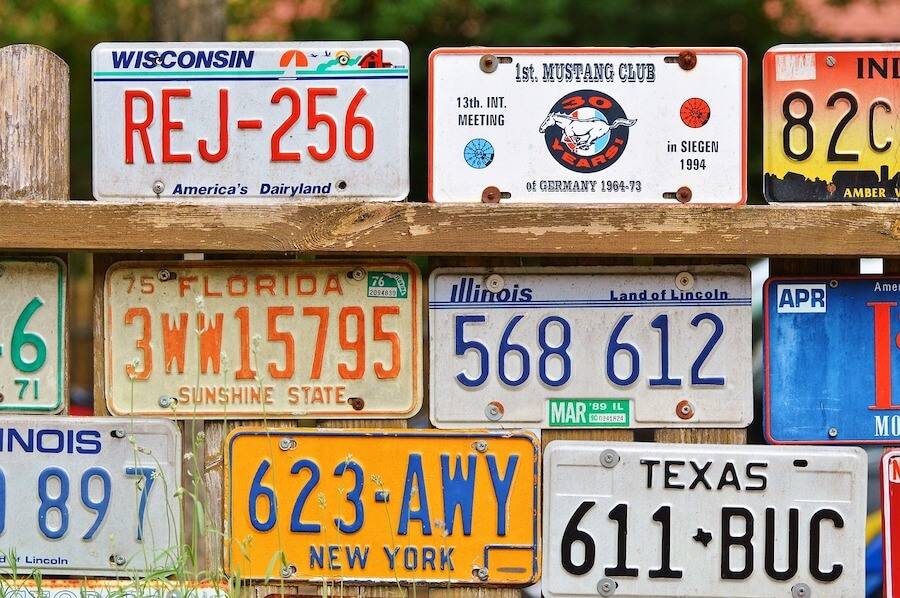As an Uber driver, one of the crucial aspects of your rideshare business is ensuring that your vehicle meets all legal requirements and guidelines.

One such requirement has valid license plates. However, there are situations where you may need to use temporary plates, such as when purchasing a new vehicle or waiting for custom plates to arrive.
This guide will detail everything you need to know about Uber temporary plates, including an in-depth look at Uber’s policies, obtaining temporary containers, and navigating various scenarios related to temporary plates.
Contents
- 1 Uber’s Policy on Temporary Plates
- 2 Understanding Uber’s Stance on Temporary Plates
- 3 Uber’s Expectations for Drivers Using Temporary Plates
- 4 Obtaining Temporary Plates
- 5 Temporary Plates and Vehicle Inspection
- 6 Updating Your Uber Account with New License Plate Information
- 7 Potential Issues with Temporary Plates
Uber’s Policy on Temporary Plates
Uber requires all drivers to have valid, up-to-date license plates registered to their vehicles.
While Uber’s policy does not explicitly mention temporary plates, it’s generally understood that temporary plates are acceptable as long as they are legal, valid, and visible.
However, remember that temporary plates have expiration dates, so replacing them with permanent ones before they expire is essential to comply with Uber’s policy and local laws.
Understanding Uber’s Stance on Temporary Plates
Although Uber does not provide specific guidelines regarding using temporary plates, it’s crucial to understand the company’s position.
Since Uber aims to maintain high safety and compliance with local regulations, the company expects drivers to adhere to all legal requirements, including license plates.
Temporary plates are typically issued by local authorities and are considered legal and valid for a period (usually 30 days). As such, you can use temporary plates while driving for Uber if they meet these criteria.
However, drivers should know that some regions may have additional restrictions or requirements concerning temporary plates, so you must familiarize yourself with local regulations.
Uber’s Expectations for Drivers Using Temporary Plates
If you’re using temporary plates while driving for Uber, you must ensure that they are:
- Legal and valid: Temporary plates must be issued by the appropriate local authority within their validity period.
- Visible: Temporary plates should be displayed in the designated area on your vehicle (typically the rear) and must be visible at all times.
- Compliant with local regulations: Be aware of any additional requirements or restrictions related to temporary plates in your region.
- Replaced with permanent plates before expiration: As temporary plates expire, obtaining your permanent plates and updating your Uber account with the new information before the temporary plates expire is essential.
Meeting these expectations allows you to comply with Uber’s policies and local laws while using temporary plates.
Obtaining Temporary Plates
Temporary plates, quick tags, or temporary registration are typically issued when you purchase a new or used vehicle from a dealership or private seller. The process for obtaining temporary plates varies by region and country, but here are some general steps to follow:
- Purchase your vehicle: When buying a new or used vehicle, the dealer or seller usually provides you with temporary plates, valid for a specific period (usually 30 days). If the seller does not provide temporary plates, you may need to visit your local Department of Motor Vehicles (DMV) or equivalent agency to obtain them.
- Visit your local DMV or equal agency: If you need to obtain temporary plates yourself, visit your local DMV office or the appropriate agency responsible for vehicle registration in your area. Bring necessary documents such as your driver’s license, proof of insurance, and the vehicle’s title or bill of sale.
- Pay the required fees: There may be fees associated with obtaining temporary plates, so be prepared to pay these costs at the time of application. The fees will vary depending on your location and the type of vehicle you’ve purchased.
- Display the temporary plates: Once you have them, attach them to your vehicle in the designated area (usually the rear of the car), following local laws and regulations. Ensure that the plates are visible and securely attached.
- Apply for permanent plates: While using temporary plates, start the process of applying for permanent plates as soon as possible. This process typically involves registering your vehicle, paying associated fees, and submitting the necessary documentation to your local DMV or equivalent agency.

Temporary Plates and Vehicle Inspection
One of the requirements for driving with Uber is passing a vehicle inspection. You may need to display your permanent license plates in some regions before completing the vehicle inspection.
However, this varies by location, so you must check your local Uber guidelines to determine if you can inspect with temporary plates.
Contact Uber support for clarification if you’re unsure about your region’s requirements. They can guide whether your vehicle with temporary plates can undergo the inspection or if you need to wait for your permanent plates to arrive.
Updating Your Uber Account with New License Plate Information
When you receive your permanent license plates, updating your Uber account with the new information is essential. To do this, follow these steps:
- Log into your Uber Driver app or access the Uber Driver portal through a web browser.
- Navigate to your account settings or profile.
- Select “Edit” or “Update” in the vehicle information section next to your license plate number.
- Enter your new license plate number and save the changes.
Remember to keep your vehicle registration and insurance information up to date in your Uber account.

Potential Issues with Temporary Plates
While using temporary plates for Uber driving, you may encounter some challenges, such as:
- Riders questioning the validity of your plates: Some riders may need to become more familiar with temporary plates or question their legitimacy. Be prepared to explain that your plates are temporary and legal and reassure riders that you are a registered Uber driver.
- Issues with tolls and parking: In some regions, temporary plates may not be compatible with electronic toll collection systems or parking enforcement. Be aware of any potential issues in your area and take necessary precautions, such as carrying cash for tolls or displaying a parking permit.
- Expiration of temporary plates: Temporary plates have expiration dates, so replacing them with permanent ones before expiration is crucial. Failure to do so can result in fines, penalties, and potential deactivation from the Uber platform.
Using temporary plates for Uber driving is generally acceptable if they are legal, valid, and visible. Obtaining permanent plates promptly and updating your Uber account with the new information is essential.
By staying informed about Uber’s policies and local laws regarding temporary plates, you can ensure a smooth transition from temporary to permanent plates and continue providing a safe and reliable service to your passengers.

Hey there! I’m Dave, an experienced Uber driver and the driving force behind this blog. Since 2015, I’ve been sharing my wealth of knowledge and practical advice on all things Uber.
From maximizing your earnings to navigating surge pricing and choosing efficient routes, I’ve got you covered. I’m passionate about empowering fellow drivers, creating a sense of community and support.
Join me on this exciting journey as I guide you through the ins and outs of the rideshare world, helping you become an Uber expert. Let’s hit the road together and unlock the secrets to success in the world of Uber.






